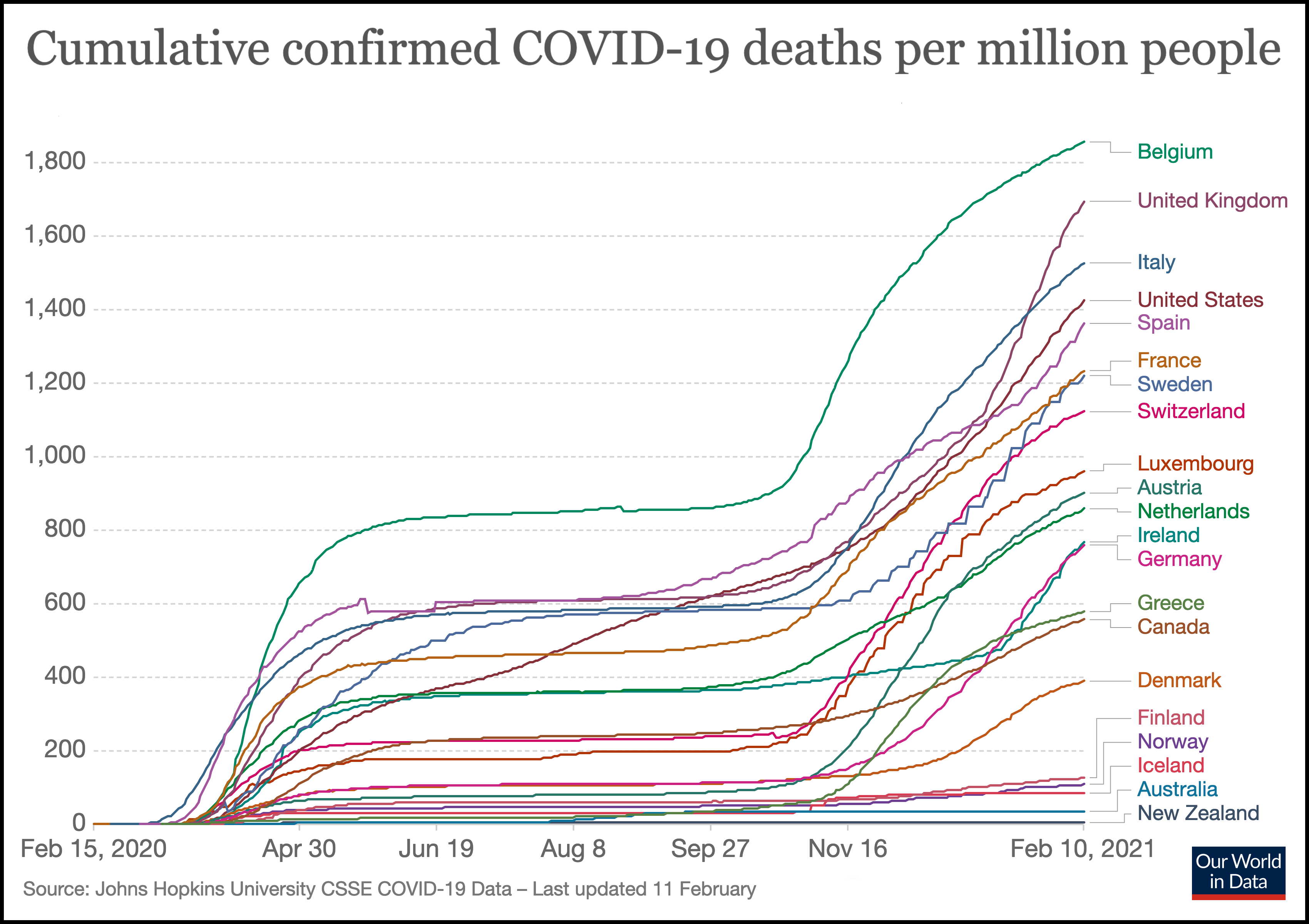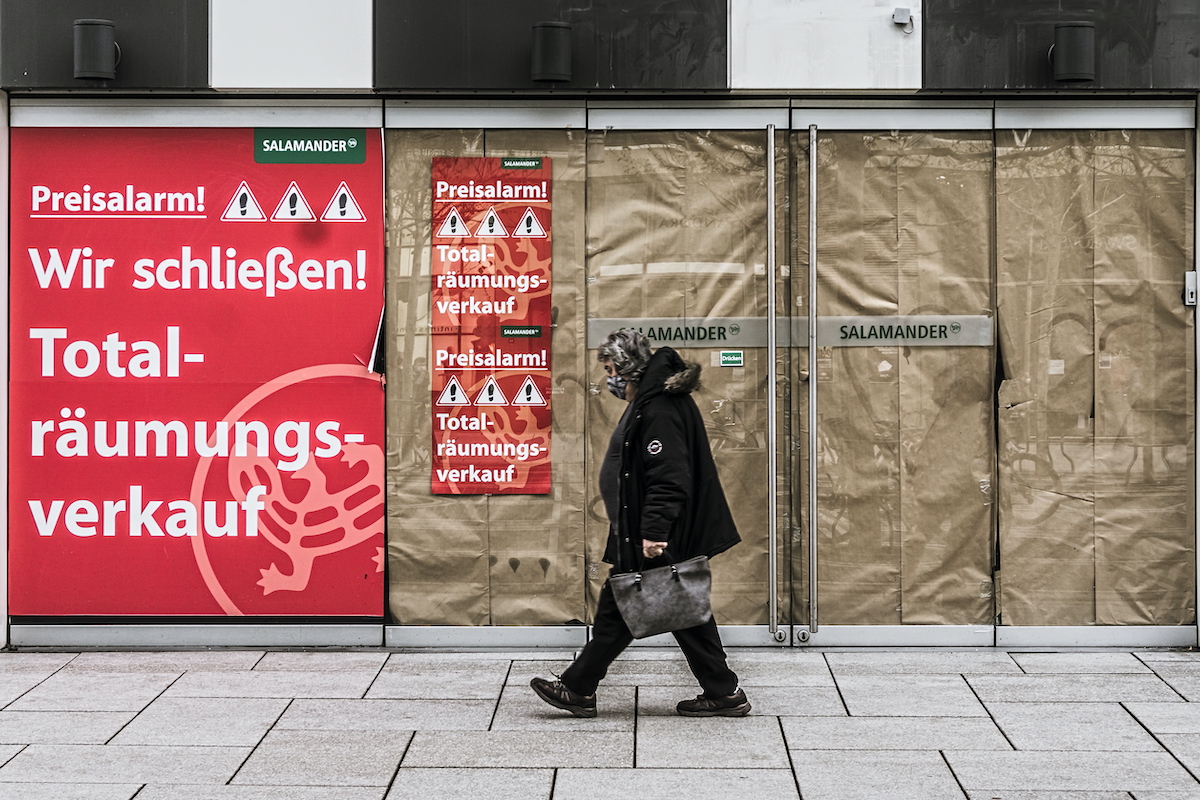COVID-19
Do Lockdowns Work? Only If You Lock the Borders Down, Too
The public debate around COVID-19 has too often centred on the question of whether a certain set of measures, usually classified as lockdowns, are or are not effective.

For almost a year, the central policy debate in most Western countries has been whether—and for how long—to impose lockdowns. Advocates of stringent lockdowns argue that measures such as stay-at-home orders and forced closures of businesses are necessary to save lives and prevent health-care systems from being overwhelmed. So-called “lockdown sceptics,” on the other hand, argue either that such measures are ineffective, or that their benefits are outweighed by the associated social and economic costs; and that a focussed protection strategy is preferable. (The term “lockdown,” as I am using it, does not encompass all non-pharmaceutical interventions. In particular, I am excluding non-onerous, common-sense measures like asking symptomatic individuals to self-isolate, encouraging vulnerable people to work from home, and restricting large indoor gatherings.)
The evidence suggests that lockdowns have been effective, but only when they were combined with strict border controls. Looking across the Western world—Europe, the United States, Canada, Australia, and New Zealand—just six countries have kept the rate of confirmed COVID-19 deaths below 300 per million. Those six are: Iceland, Norway, Finland, Cyprus, Australia, and New Zealand. Note that in every case except Cyprus, the per capita rate isn’t just below 300 per million, but (as of this writing) below 150 per million.

All six are wealthy, geographically peripheral countries with low or moderate population densities. Four are islands. The other two, Finland and Norway, have land borders that run mostly through remote wilderness, punctuated by a few easily monitored points of road and rail entry. The largest cities in these two countries, Helsinki and Oslo, contain only about 600,000 people each, and are dwarfed by true international hubs such as London, Paris, Madrid, Rome, and New York (all of which became COVID-19 hot spots). So each of the six successful countries had a head start in responding to the pandemic.
Australia and New Zealand are often cited by lockdown advocates as models for other countries to emulate. Since the pandemic began, both countries have imposed local or national lockdowns whenever case numbers have started to rise. (Earlier this month, in fact, all of Western Australia was ordered into five-day lockdown when a single case of COVID-19 was reported among the guard staff at a Perth hotel being used as a quarantine facility.) Overall, such policies have been highly successful. Even at the height of the pandemic, Australia never reported more than 716 cases in a single day, while New Zealand has never reported more than 89 daily cases. In fact, neither country has reported more than 50 per day since mid-September, and for the last month the numbers have been in the low single digits.

Crucially, both countries have maintained strict border controls throughout the pandemic. Researchers at the Oxford Blavatnik School have assembled a database of government responses to the COVID-19 pandemic. When it comes to restrictions on international travel, they rate countries on a zero-to-four scale, with zero indicating no restrictions, and four corresponding to a “ban on all regions or total border closure.” Since February 2nd, 2020, neither country’s rating has dipped below three (“ban on arrivals from some regions”). Australia has had 210 days of total border closures, while New Zealand has had 316. By way of comparison, the UK’s rating did not rise to three until November 6th, and the country has had zero days of total border closures.
So it appears that it was only by combining lockdowns with strict border controls that Australia and New Zealand managed to contain the virus, and thereby keep their COVID-19 death rates low. Had they not enforced controls at the border, it is likely that new cases would have been brought in from outside. While such cases might initially have been few in number, they could eventually have snowballed (which is why government officials now respond decisively to even solitary case reports). By that time, even draconian lockdown measures such as curfews and workplace closures might not have been sufficient to prevent death rates from rising.
The other four countries mentioned above—Iceland, Norway, Finland, and Cyprus—have also maintained strict border controls. Iceland, an island nation whose capital has a population of little more than 120,000, has had a rating of three since March 20th. Norway imposed a total border closure between March 15th and June 14th, at a time when the disease was raging throughout continental Europe. Finland and Cyprus also closed their borders during the first wave of the pandemic, and have maintained a rating of at least three since the Spring of 2020.
In the rest of Europe and North America, by contrast, there is little evidence that lockdowns have been associated with low COVID-19 death rates. Sweden took the least restrictive approach of any major Western economy. According to the Oxford Blavatnik School’s database, it has had zero days of mandatory stay-at-home orders. Despite this, it has reported fewer COVID-19 deaths per million than several countries that implemented extensive lockdowns, including the UK, Belgium, Spain, and Italy. Canada’s COVID-19 numbers have been plunging in recent weeks, following the imposition of stringent lockdown measures in the most populous provinces. But there has been an almost exactly parallel dip in the United States, much of which is under no lockdown whatsoever.

As researcher Philipe Lemoine has noted, there are several examples of locations where case numbers fell continuously in the absence of lockdowns, as well as several examples where case numbers rose continuously in the presence of a lockdown. His analysis suggests that once some basic measures are put in place—these being the common-sense measures listed in the first paragraph of this essay—the imposition of additional measures may have only a marginal impact on overall transmission.
Although China isn’t a Western country, its example appears to show that a rigidly enforced lockdown, complete with a ban on interregional movement, can stop an epidemic quickly. But the measures used in China were highly intrusive, which likely explains why most Western countries have been reluctant to implement them (even if they could enforce them, which seems doubtful). The few Western countries that have achieved success comparable to East Asia are those that leveraged their geographical isolation, and imposed politically realistic lockdown measures when case numbers were low.
This is not to say that lockdown policies have had no beneficial effect whatsoever in Europe and North America. But their effect seems to be small enough that it has been obscured by the statistical noise associated with cross-country variation. Certainly, the effect of lockdowns does not stand out in the same way as that of border controls in geographically peripheral countries. These latter measures worked not only in Australia and New Zealand, but also in East Asian countries like South Korea and Taiwan.
It’s important to note, however, that some Western countries have failed to contain the virus despite maintaining highly strict border controls. Hungary has had 201 days of total border closures, but has reported about as many COVID-19 deaths per capita as Italy and Spain, two of the countries where the first massive European outbreaks started. Landlocked Hungary borders seven other countries. Its example suggests that a rigorously enforced border-control strategy may not be workable for states that lack pre-existing geographical advantages.

I haven’t done a detailed statistical study, so I am not presenting my conclusions here as definitive. But if the analysis is correct in its broad strokes, it raises the question of whether countries like the UK, France, and Italy would have been better off using a different approach. While the marginal benefits of curfews and business closures may have been small, the associated costs were substantial. During the first wave, case numbers were already high by the time governments reacted, so closing borders at that time probably wouldn’t have made any difference. But what about the second wave in mid-to-late 2020? Case numbers in Europe began rising in August, spiked in November, and then rose again last month. If the affected countries had imposed strict border controls in the early summer, and then used temporary lockdowns to supress the virus completely when there were new outbreaks, there may have been substantially fewer deaths during the winter.
This is admittedly a counterfactual with many unknowns. As noted above, countries with numerous ports-of-entry, and which don’t enjoy the benefit of geographical isolation, may not have been able to contain the virus through such means—especially given that the most effective measures would have been hard to enforce as a matter of politics. It’s therefore worth considering what alternative approach policymakers could have taken. Such an approach might have avoided full lockdowns (so as to minimise economic damage), and instead sought to provide focused protection for at-risk groups. Clearly, we should have done more to protect the residents of care homes, since an enormous share of COVID-19 deaths occurred in residential-care settings.
The public debate around COVID-19 has too often centred on the question of whether a certain set of measures, usually classified as lockdowns, are or are not effective. As intensely debated as the question has been, it’s the wrong one to ask. Rather, the data suggest that the results of lockdowns vary according to geographical factors, travel-control policies, and a population’s underlying tolerance for behavioural restrictions. One hopes that ongoing scientific research will shed more light on the interplay among these factors, so that we can save more lives in the future.
Correction: This article was corrected on March 8th, 2021 so as to include mention of Cyprus among the listed countries that have kept the rate of confirmed COVID-19 deaths below 300 per million. In the originally posted version, Cyprus was mistakenly omitted.






